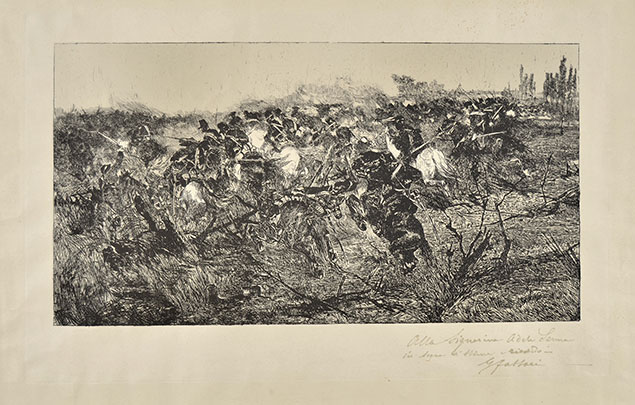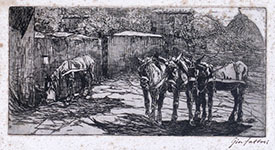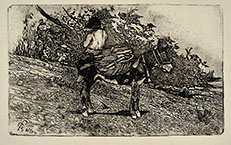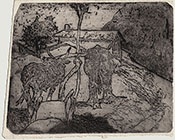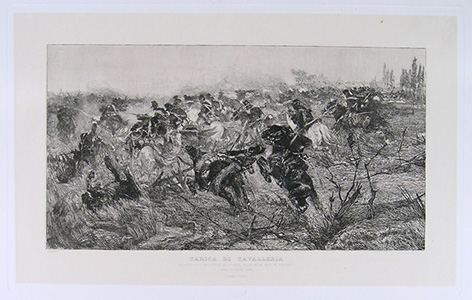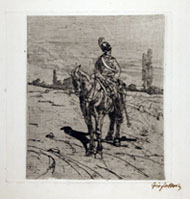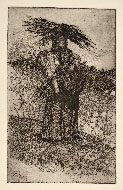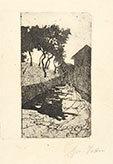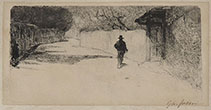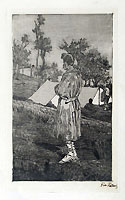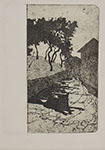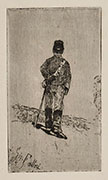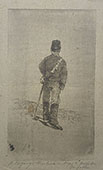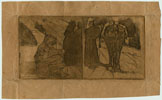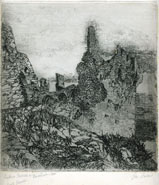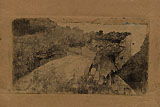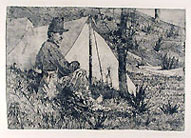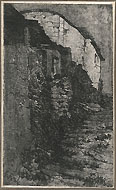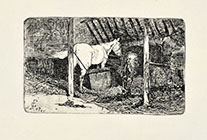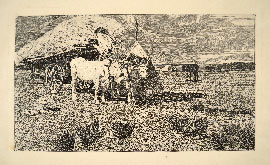(Livorno 1825 - Florence 1908)
CARICA DI CAVALLERIA (Cavalry Charge), 1883-84
Copper etching, Baboni-Malesci CLXXVIII. A rare impression of the first state of two, before the letters, dedicated and signed by the artist in pen and brown ink at bottom right Alla Signorina Adele Senna / in segno di stima e ricordo./ GFattori. Printed with black ink on a large sheet of thin laid paper with no watermark. Traces of soft creases, paper stained by tape at the top margin. To the platemark 359 x 562 mm, the full sheet measuring 467 x 668 mm.
Our impression, on laid paper, seems to be a particular proof of the first edition of 1884. The paper used, in fact, is not among those reported to date for this edition: Chine appliqué mounted on white thick wove paper or just white wove.
This etching, certainly among the first executed by Fattori, was commissioned to the artist by the Florentine Società Promotrice delle Belle Arti to replicate the large canvas dated 1873, exhibited in 1878 at the Exposition Universelle in Paris, and in 1882 at the Società Promotrice Fiorentina, then purchased by King Umberto I, today at the GAM in Florence.
Giovanni Fattori, possibly the most important painter of the nineteenth century in Italy, received his first instruction in drawing from a lesser painter of his native town. In 1846 Fattori moved to Florence to attend the Academy. During the 1850s Fattori joined the innovative artists, called Macchiaioli, who met at the Caffè Michelangelo in Florence and were champions of a new technique and style to contrast the conventional academic language. During those years, he still produced works that could be attributed to the historical-romantic school but his interest in studying from life also extended to landscape painting and the military life of the day became the subject of his first experiments in painting using the macchia technique. In 1867, after the death of his first wife, Fattori frequently stayed in the Maremma region which became the ideal backdrop for his works. Fattori began etching in the early 1880s, when he was nearly sixty; quite soon he was able to appreciate the difference of expression he could achieve using this new medium. A real peintre-graveur, he continued with etching his artistic research on light and essential shapes in reality.
